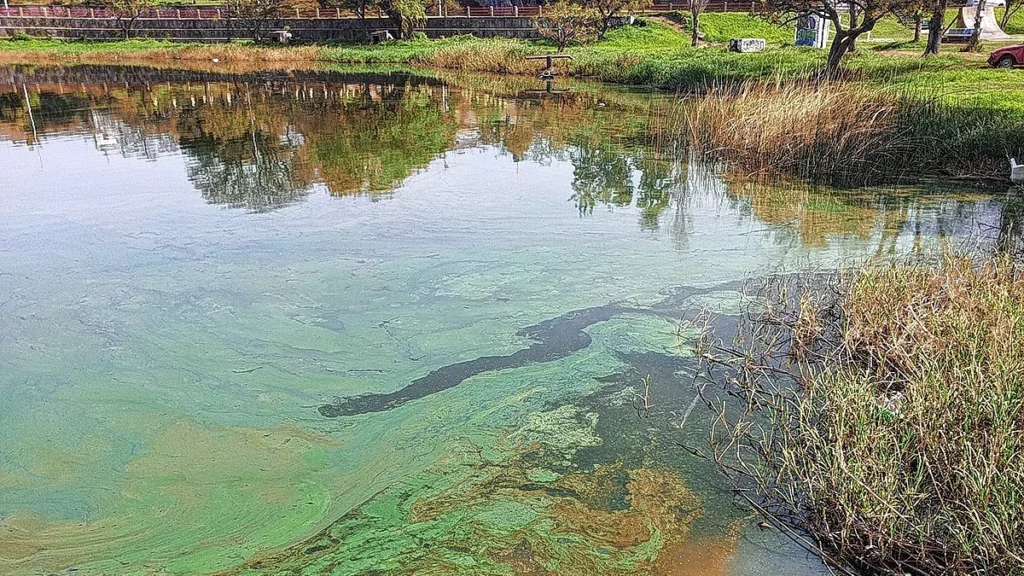When temperatures rise and the summer sun beats down, conditions are ideal for rivers and lakes in Argentina to produce harmful algae blooms. In Buenos Aires, the largest and most populous province of the country, the government has just issued an orange alert due to the blooming algae that are affecting its south coast and some lakes.

Blue-green algae, also called cyanobacteria, are a phylum of bacteria found in fresh water like rivers, lakes, ponds and reservoirs. They can multiply a lot in the summer, which causes extensive growth called blooms. They usually form when water conditions are calm and the weather is hot, and can be blue-green or greenish-brown, with a musty smell.
The blooming of blue-green algae in Buenos Aires can be linked to the excess of nutrients, such as nitrogen and phosphorus used in food production, in the water, a government report reads. There are also other factors at play such as the high temperatures, reaching 35 degrees Celsius this week, and the lack of wind and waves in the water.
“Growing urban populations, intensified fertilizer use in agriculture, increasing volumes of nitrogen- and phosphorus-laden household and industrial effluents, and climate change are accelerating these processes worldwide,” the report reads. This adds up to a record drought faced by the country, now in its third consecutive year.
The orange alert means that there’s now a medium risk in several spots across the province, as seen in the map below. The government is suggesting people avoid contact with the blooms, wash up with clean water after bathing in a river or a lagoon, avoid eating food fish from the water, and pay a close eye on children.
“There are times when all the causal factors come together: permanent heat, little rain, stagnant water and excessive use of agrochemicals. It is no coincidence that the orange alert is in the La Plata basin and in areas that use a lot of fertilizers,” Andrea Guillade, a researcher at Quilmes University in Buenos Aires, told Página/12 daily.
Risks and challenges of cyanobacteria
While it’s not the case with all blooms, some can produce harmful toxins. When toxic blooms die and decay, the chemicals can be released into the water. Most toxins are degraded in two weeks, but they can remain the water at low levels for months after a bloom forms. It’s not possible to tell if a bloom is harmful or not based on how it looks.
Once the blooms occur, not much can be done to stop them. Blooms go on for as long as the favorable conditions remain in place. This means cooler weather, less sunshine and rain can reduce blooms over time. Testing for toxicity can help to support water-use decisions and identify alternative water supplies for domestic use, as necessary.
People can get sick by swallowing, having skin contact with, or breathing in airborne water droplets while swimming, boating or showering in water that has harmful algae. If that happens, symptoms usually start hours to two days after exposure, including vomiting, diarrhea, eye irritation, cough, sore throat, and headache, among other symptoms.
Beyond the risky blooms, blue-green algae also play an important role in ecosystems. They were among the earliest organisms on Earth to produce oxygen during photosynthesis, fixing CO2 dissolved in the water. Despite making up only a small percentage of the ocean’s biomass, they are also the main agent for nitrogen fixation.









